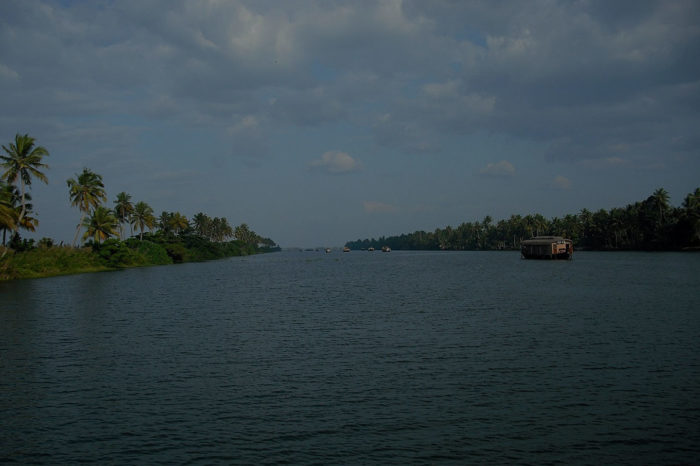Mahabalipuram
Related Tours

Kerala Backwaters & Beaches
8 Nights/09 Days: (Cochin - Alleppey –Homestay-Varkala – Kovalam ) Day 1: Arrival at Cochin Airport- Cochin Arrive at Cochin Airport. You will be met and transferred to Fort Cochin (90 Mins). Fort Cochin is the home …
This sanctuary on a lagoon is virtually the same as it was six hundred years ago, which adds to the fascinating character.
Mamallapuram dates back to the Tamil Pallava dynasty in the 7th-9th century. The structures here, mostly carved straight out of granite, are among the oldest existing examples of Dravidian (South Indian) architecture.
Today’s Mamallapuram is purely a tourist town and one of the major attractions around Chennai. The East Coast Road has made it easily accessible – just about an hour from the city. Unfortunately, the entire strip is now a mess of restaurants, resorts, amusement parks, people, discarded plastic and chaotic traffic. At one time you could see the Bay of Bengal almost all the way to M’puram, but, there is so much development that the ocean is glimpsed only as you get close to M’puram.
Mamallapuram itself was getting run down over the last decade with very patchy efforts at keeping the monuments preserved. This has changed in the last few years with the Shore Temple being included in the UNESCO heritage project. The surroundings have been made much nicer, but, there has been a lot of wind and water erosion on the temple carvings with many of them having undergone loss of detail over the years. Sort of too little, too late, but still, better than nothing. Be prepared to fight you way through clutches of gypsies, beggars, guides, snakes charmers and so on, all of which is an essential part of the experience and not to be frowned upon. The whole thing would be bland without them. A nuisance, but harmless.
See
A combined entrance tikcet to the Shore Temple and the Five Rathas costs Rs 250 for foreigners and Rs.10 for Indian citizens. Local guides, who speak multiple languages, are available for around Rs 200 for a tour of all main attractions.
Shore Temple: The oldest structure in the area, build c. 700 AD, this temple has been here for more than 1400 years. However, unlike Mamallapuram’s other monuments, the Shore Temple is a building (not carved from rock) and the bulk of the current structure is a reconstruction after it was struck by a cyclone. It’s not particularly large, and the carvings have been badly eroded by the wind and the sea, but this adds to the sense of antiquity. The area around the temple is now a landscaped park, with guards keeping the hordes of souvenir hawkers at bay. A Shiva lingam is enshrined in the central building and the site can get very crowded on weekends.
Five Rathas (Pancha Pandava Rathas). This site contains five rathas, literally chariots, dating from the 7th century. The sculptures are complemented by some enormous stone animals, including a large elephant.
Thirukadalmallai, the temple dedicated to Lord Vishnu. It was also built by Pallava King in order to safeguard the sculptures from the ocean. It is told that after building this temple, the remaining architecture was preserved and was not corroded by sea.
Sculpture Museum, East Raja Street has hundreds of sculptures in stone, wood etc.It is well worth a visit. Rs. 2 entrance fee.
The following structures are all carved straight out of rock in the central hillside area, so you can travel between them on foot. The scenery within the hills is also quite unusual, with smooth rock rising out of the forest and carved stairways leading between the mandapas (pavilions), caves and carvings.
Arjuna’s Penance, also known as the Descent of the Ganges. A giant bas-relief filled with detailed carvings, including a family of elephants and monkeys. Archaeologists still squabble over what, exactly, the bas relief depicts; the central figure may actually depict Bhagiratha, not Arjuna.
Krishna’s Butterball is a giant natural rock perched on a hillside, seemingly in defiance of all laws of physics. It provides welcome shade if you dare to sit underneath it, and local kids have discovered that the slippery nearby hillside also makes a great natural slide.
Mahishamardini Cave: The central carving is of Shiva and Parvati and Murugan
Varaha Cave has four impressive carvings of Vishnu, Gakalakshmi, Trivikama and Durga.
Old and new light houses provide views across the area to the sea. There are several unfinished temples nearby, and the December 2004 tsunami exposed more previously submerged temples.
Share this tourAbout Us
LezGoTrip has contracts with well-chosen hospitality and travel services providers in South India. These include leading hotels, resorts, vehicle and transport services, booking agents, houseboat owners and well trained and informative local guides. In this sense, we are more than a mere website that connects you with other service providers.Call: +1 647-550-3394
Popular Trips
Popular Destinations
